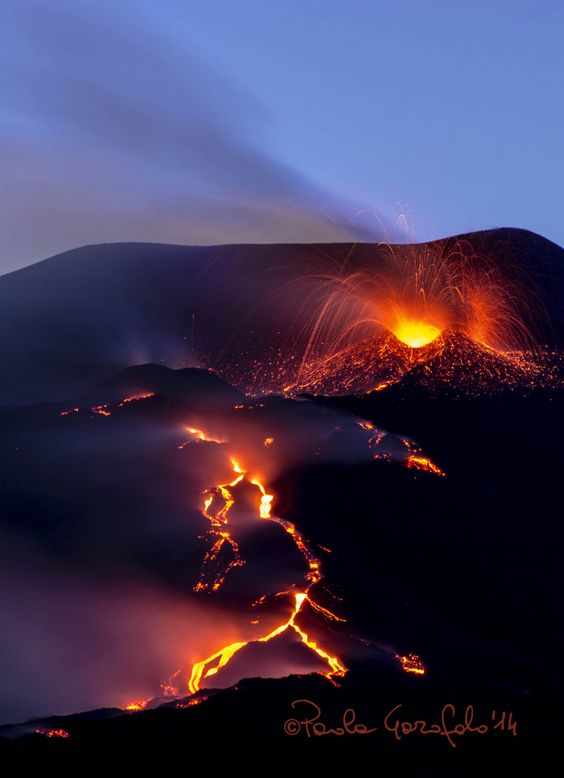
- Formation and Structure: Volcanoes are born from the Earth’s molten interior. Deep beneath the Earth’s surface, tectonic forces and intense heat create an environment where magma, a mixture of molten rock, gases, and solids, can rise to the surface. As magma erupts through a vent or fissure, it forms a volcanic mountain. Volcanoes come in various shapes and sizes, from gently sloping shield volcanoes to steep and dramatic stratovolcanoes.

- Types of Volcanoes: There are several types of volcanoes, each with its own characteristics and eruption styles. Shield volcanoes, like Hawaii’s Mauna Loa, have broad and gently sloping profiles due to the fluidity of the lava they release. Stratovolcanoes, such as Mount Fuji in Japan, are tall and conical, built from layers of lava, ash, and volcanic debris. Calderas, like Yellowstone Caldera in the United States, form when a volcano collapses after a massive eruption, leaving behind a large depression.

- Volcanic Activity and Eruptions: Volcanoes are renowned for their explosive and dynamic nature. Volcanic eruptions occur when pressure builds up within the volcano, causing the release of gases, ash, and lava. These eruptions can range from gentle lava flows to violent explosions, ejecting ash clouds, pyroclastic flows, and even triggering volcanic lightning. Volcanic eruptions can have significant impacts on local and global environments, influencing weather patterns and, in extreme cases, affecting climate.

- Volcanoes and Ecosystems: Despite their destructive potential, volcanoes also play a crucial role in shaping ecosystems and fostering biodiversity. Volcanic soils are rich in minerals and nutrients, creating fertile grounds for plant growth. Over time, pioneer plant species colonize volcanic landscapes, gradually transforming them into thriving ecosystems. Some volcanic regions, such as the Galapagos Islands, have unique flora and fauna that have evolved in isolation, showcasing the resilience and adaptability of life in extreme environments.





